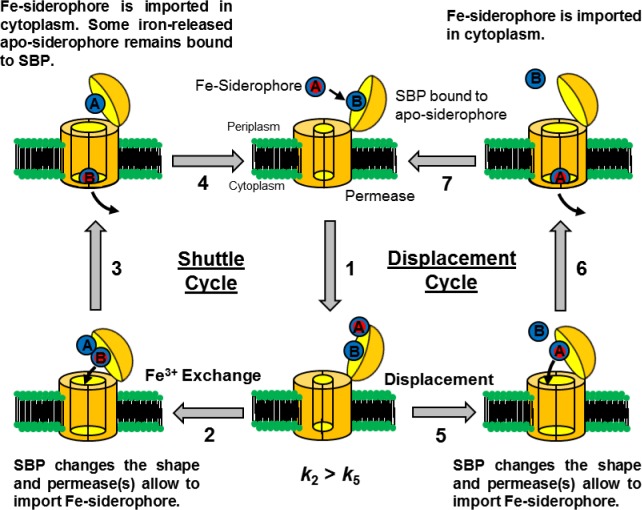Figure 1.
Models of the Gram-positive siderophore-shuttle mechanism and displacement mechanism of YxeB. YxeB is initially bound to an apo-siderophore. (1) A Fe-siderophore approaches YxeB and rests near the binding pocket occupied by the apo-siderophore. At this step two pathways are possible. Steps 2–4 are the shuttle pathway. (2) Iron exchanges from the Fe-siderophore to the apo-siderophore in the binding pocket. The protein facilitates this step by increasing the local concentration of the entering ligand and the ferric complex. (3) The new Fe-siderophore (B) is transported and the created iron-released ligand (A) may remain to be bound the YxeB protein. (4) The receptor is bound to an apo-siderophore. Steps 5–7 are the displacement pathway. (5) The Fe-siderophore displaces the apo-siderophore and occupies the binding pocket. (6) The original Fe-siderophore (A) is transported. (7) The SBP is bound to an apo-siderophore. In the Gram-positive siderophore-shuttle both pathways operate but the shuttle pathway is preferred.

